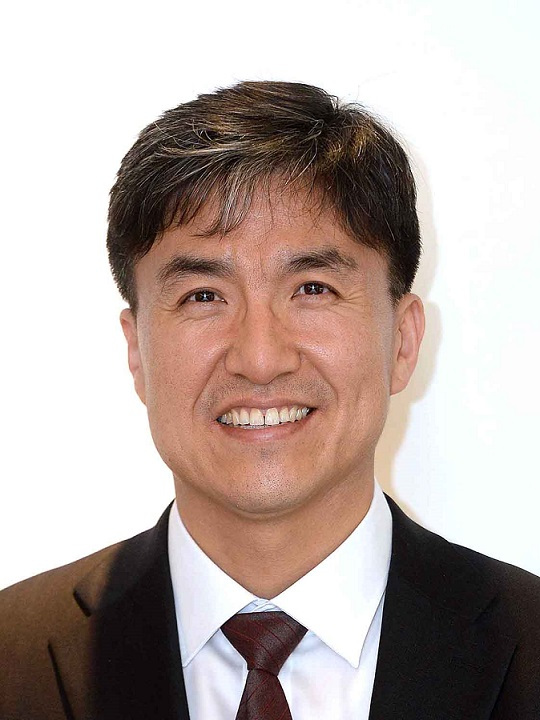[Herald Interview] The control engineer out to switch cancer off
Kaist researcher’s systems approach shows promise in quest to stop cancer cells multiplying
By Lim Jeong-yeoPublished : Feb. 16, 2020 - 14:35
When a team of South Korean researchers published research last month on a potential approach to treating bowel cancer, there was a huge buzz in the scientific media.
There was no drug candidate for the approach but if one were found it could, in theory, mean that not just this, but other types of cancer could become a chronic illness rather than a life threatening condition.
There was no drug candidate for the approach but if one were found it could, in theory, mean that not just this, but other types of cancer could become a chronic illness rather than a life threatening condition.

It would require years of study from here on, but at the end of our research will come the day when cancer patients would live life to their fullest, as the malignant tumors would have become benign ones that can be controlled with medication like any other chronic illness,” Cho Kwang-hyun, the lead researcher of the study, told The Korea Herald.
Cho’s study, which made the January cover of international journal Molecular Cancer Research, involves adjusting the biological control mechanisms in cancer cells to stop them reproducing.
If it leads to a drug being found, it could not only be more effective, but also less toxic to the patient than existing treatments.
A cancer cell has a lot of accumulated mutations that makes undoing them all a very complicated and difficult process, so treatments have generally been directed at killing the mutated cells. But in doing so, the treatments also killed healthy cells, causing numerous side effects for patients.
This study was limited to colorectal cancer, but he believes this same approach of re-regulating cell’s control mechanisms could be used to treat other cancers.
Cho has an unusual background for a cancer researcher. He started in electronic engineering, and began as early as 1999 to apply control engineering to biology.
Control engineering was developed more than 200 years ago, as a way to operate complex mechanisms and systems using feedback to make corrections. That could be as simple as the temperature regulator in your fridge, or much more complicated, like the automatic systems that keep planes and satellites flying.
“I began to study the convergence of control engineering with life science after coming to think that our bodies, too, have an advanced system that works in the most complex ways to keep us alive without our active awareness,” Cho said.
When Cho was starting out in this newfound research interest of his in the late 1990s, not much work had been done to solve the puzzles of life from a control engineering perspective. Cho has researched internationally in Sweden, Ireland, the UK, the US and China -- and in the stream that is now known as systems biology, he is one of the leading researchers.
For this study that pitched to revert colorectal cancer cells back to normal-like cells, Cho’s team mathematically modeled the complex regulation networks of a living organism and through computer simulation analysis and biological experiments, defined the molecular target to take out the malignancy in the cancer cell.
Cho’s latest study identified an epigenetic regulator called SETDB1 that prevents cancer cells from naturally reverting back to normal. Cho and his team found that inhibiting SETDB1 would activate transcription factors that stop the proliferation of cancer cells.
The team used a biological molecule called small hairpin RNA to inhibit SETDB1, and found that this ended the mass-proliferation of cancer cells, indicating that the cancer cell, once a malignant tumor, became benign and under control.
The entire process was conducted on an organoid, which is a miniaturized replica of an organ grown in the lab from tissue or stem cells.
“It is my hope to continue this research so that we can give hope to patients whose condition has exacerbated to the state that no other treatments can help,” Cho said.
The goal, as hopeful as it is, would require extensive time and investment to materialize.
It takes at least 10 years to find a drug candidate and clinically test it so that it can be prescribed.
Any medical treatment, for it to be safe, has to be tested on animals, and go through a phase 1 clinical trial in a small batch of healthy people, then through phase 2 and 3 clinical trials to test for side effects and to see how well it works.
While Cho’s team has shown SETDB1 inhibition could alleviate colorectal cancer in the lab, they are yet to find a drug candidate that can be used in clinical trials.
Securing research funding for the length of time until this potential drug candidate is found and developed to commercial stage is a tough obstacle, Cho said.
The team will try to carry on the research to pre-clinical stage. Cho is mulling potentially setting up his own startup.
Cho acknowledged that there was quite likely to be better targets than SETDB1 given further in-depth research, and that his team would continue to research for more effective doors to break through to capitulate cancer.
Cho is the associate vice president of research at Korea Advanced Institute of Science and Technology in Daejeon. His team consists of fellow KAIST scientists, and Samsung Medical Center researchers.
The article, titled “Network Inference Analysis Identifies SETDB1 as a Key Regulator for Reverting Colorectal Cancer Cells into Differentiated Normal-Like Cells” was published in Molecular Cancer Research on Jan. 2.
By Lim Jeong-yeo (kaylalim@heraldcorp.com)









![[Kim Seong-kon] Democracy and the future of South Korea](http://res.heraldm.com/phpwas/restmb_idxmake.php?idx=644&simg=/content/image/2024/04/16/20240416050802_0.jpg&u=)







![[KH Explains] Hyundai's full hybrid edge to pay off amid slow transition to pure EVs](http://res.heraldm.com/phpwas/restmb_idxmake.php?idx=652&simg=/content/image/2024/04/18/20240418050645_0.jpg&u=20240418181020)

![[Today’s K-pop] Zico drops snippet of collaboration with Jennie](http://res.heraldm.com/phpwas/restmb_idxmake.php?idx=642&simg=/content/image/2024/04/18/20240418050702_0.jpg&u=)